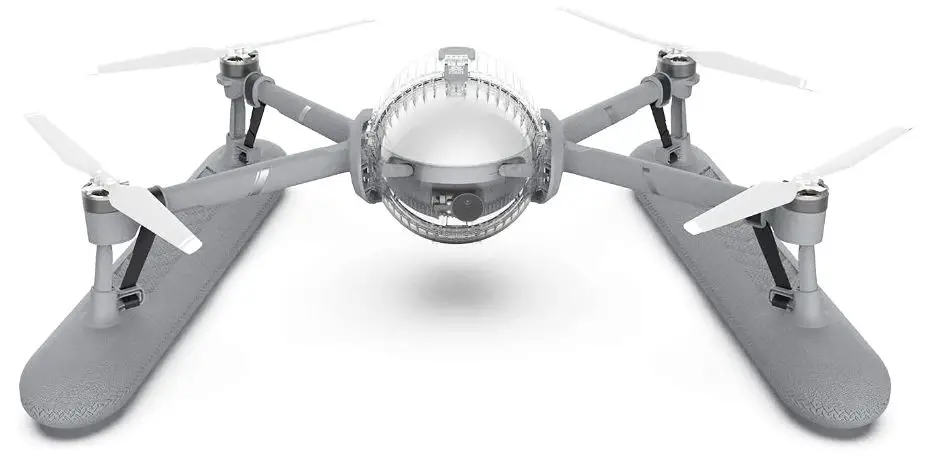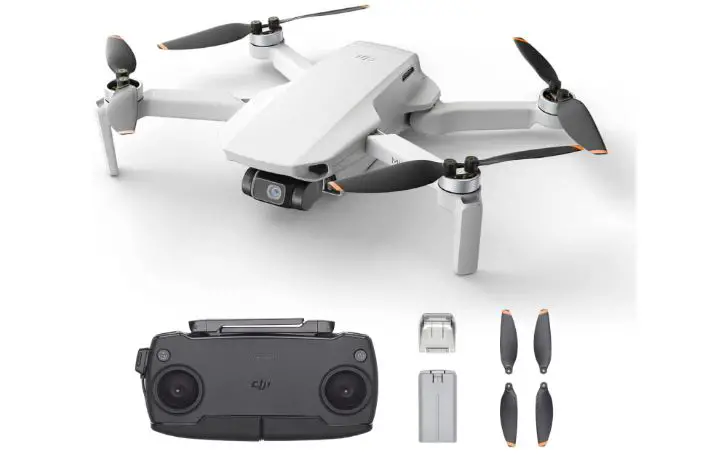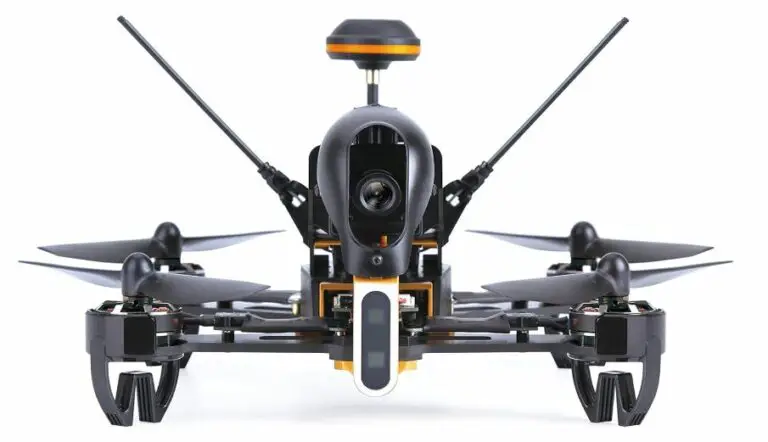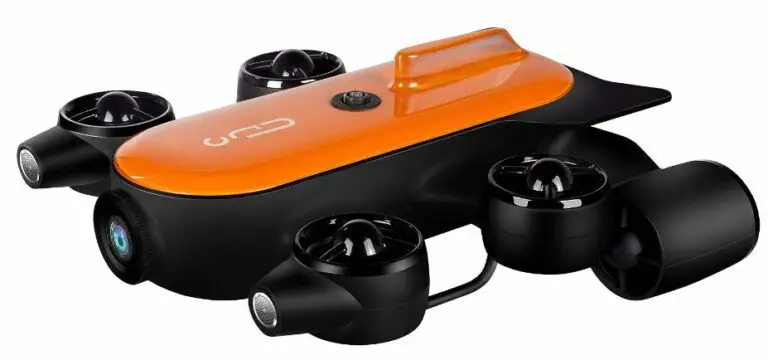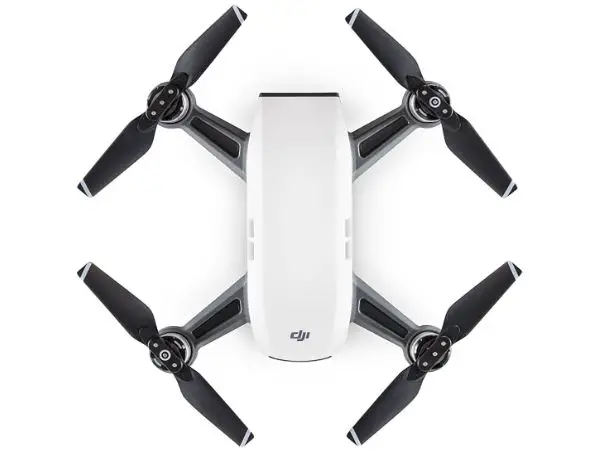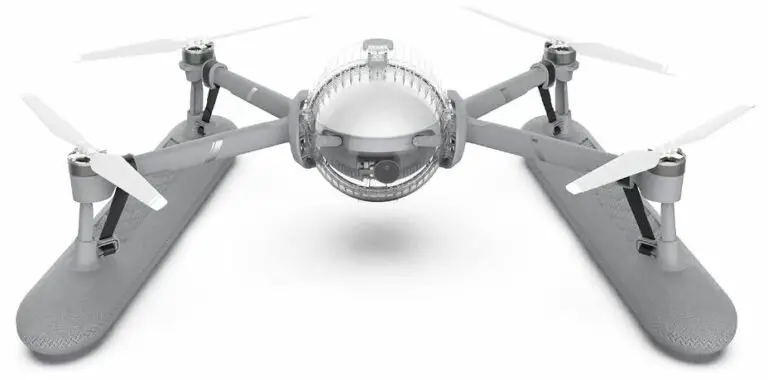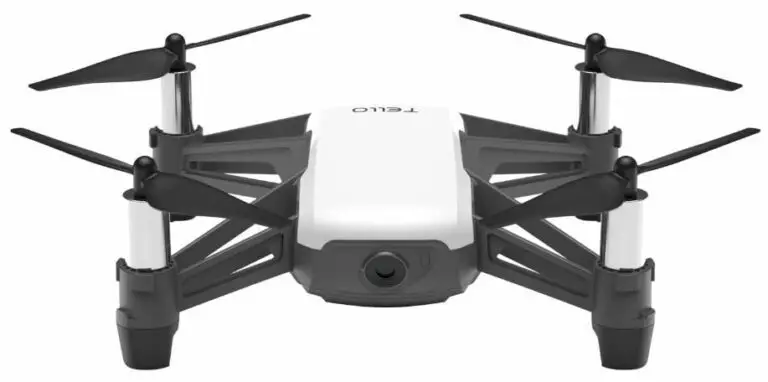Learn to Fly: Drone Basics for New Pilots
Introduction
Introducing the basics of drone piloting is essential for newcomers to the world of unmanned aerial vehicles (UAVs). In this guide, we’ll provide a comprehensive overview of drone basics, covering everything from understanding the components of a drone to essential flying techniques and safety precautions. Whether you’re a hobbyist looking to explore the skies or an aspiring professional seeking to enter the world of aerial photography or videography, this guide will serve as a solid foundation for your drone piloting journey.
In this introduction, we’ll briefly outline what drones are, their various applications, and the importance of learning proper drone piloting skills. Additionally, we’ll highlight the structure of this guide, giving you a roadmap for what to expect in the subsequent sections.
Let’s dive in and embark on this exciting journey into the world of drones!
Choosing the Right Drone
Selecting the right drone is crucial for a fulfilling and successful flying experience. Here’s what you should consider when choosing a drone:
- Purpose and Use Case:
- Determine the primary purpose of your drone. Are you interested in aerial photography, videography, racing, recreational flying, or professional applications like surveying and mapping?
- Different drones are designed for different purposes, so it’s essential to select one that aligns with your intended use case.
- Skill Level:
- Consider your skill level as a pilot. Beginner-friendly drones typically offer features like altitude hold, automatic takeoff and landing, and simplified controls, making them easier to fly for novice pilots.
- Advanced drones may offer more manual control options and features suitable for experienced pilots.
- Budget:
- Set a budget for your drone purchase. Drones come in a wide range of prices, from affordable entry-level models to high-end professional-grade UAVs.
- Keep in mind that additional costs may include spare batteries, propellers, and accessories.
- Camera Quality:
- If aerial photography or videography is your main interest, prioritize drones with high-quality cameras. Look for drones with stabilized gimbals and adjustable camera settings.
- Consider the resolution, image stabilization capabilities, and other camera features based on your photography or videography requirements.
- Flight Time and Range:
- Check the drone’s flight time and range specifications. Longer flight times allow for more extended aerial sessions, while greater range enables you to fly the drone over longer distances.
- Keep in mind that flight time and range may vary based on factors like battery capacity and environmental conditions.
- Portability and Size:
- Portability is essential if you plan to travel with your drone. Compact and foldable drones are easier to transport and carry, making them ideal for outdoor adventures and travel photography.
- Larger drones may offer better stability and payload capacity but may be less convenient for transportation.
- Features and Technology:
- Evaluate the features and technology offered by the drone. Look for features like GPS navigation, obstacle avoidance, intelligent flight modes, and automated flight functions.
- Advanced features can enhance the flying experience and provide additional safety and convenience.
- Regulatory Compliance:
- Familiarize yourself with local regulations and laws regarding drone operation in your area. Ensure that the drone you choose complies with these regulations, including registration requirements and flight restrictions.
By considering these factors and conducting thorough research, you can choose the right drone that meets your needs and preferences. Whether you’re a beginner or an experienced pilot, selecting the perfect drone will enhance your flying experience and open up a world of possibilities in aerial exploration and creativity.
Understanding Drone Components
Before you take to the skies, it’s essential to familiarize yourself with the key components of a drone. Understanding these components will not only help you operate your drone more effectively but also troubleshoot any issues that may arise. Here’s an overview of the main components of a typical drone:
- Frame:
- The frame is the structure that holds all the components of the drone together. It can be made of various materials such as plastic, carbon fiber, or aluminum. Frames come in different sizes and designs, depending on the type and purpose of the drone.
- Propellers:
- Propellers are rotating blades attached to the motors that generate lift and thrust to propel the drone through the air. Most drones have four propellers arranged in pairs, with two rotating clockwise (CW) and two counterclockwise (CCW) to provide stability.
- Motors:
- Motors are electrically powered devices that spin the propellers to create thrust. Drones typically have brushless motors for efficiency, reliability, and smooth operation. The number and size of motors depend on the drone’s size and payload capacity.
- Electronic Speed Controllers (ESCs):
- ESCs are electronic circuits that regulate the speed and direction of the motors by adjusting the power supplied to them. They receive commands from the flight controller and translate them into motor outputs to control the drone’s movement.
- Flight Controller:
- The flight controller is the brain of the drone, responsible for processing sensor data, interpreting user commands, and stabilizing the aircraft in flight. It utilizes gyroscopes, accelerometers, barometers, and other sensors to maintain stability and control.
- Battery:
- The battery provides power to the drone’s electronic components, including the motors, flight controller, and camera (if equipped). Lithium-polymer (LiPo) batteries are commonly used due to their high energy density and lightweight properties.
- Propulsion System:
- The propulsion system consists of the motors, propellers, and ESCs working together to generate thrust and control the drone’s movement in the air. It plays a crucial role in achieving stable flight and maneuverability.
- Radio Transmitter and Receiver:
- The radio transmitter is the handheld controller used by the pilot to send commands to the drone. The receiver, mounted on the drone, receives these commands and relays them to the flight controller, enabling remote control of the aircraft.
- Onboard Sensors:
- Drones may be equipped with various sensors to provide real-time data for navigation, stability, and safety. Common sensors include GPS for positioning, accelerometers for measuring acceleration, gyroscopes for orientation, and barometers for altitude.
- Camera (Optional):
- Many drones come equipped with built-in cameras or can mount a camera for aerial photography or videography. The camera may be fixed or gimbal-mounted for stabilization and can capture still images or video footage.
Understanding these components and how they interact with each other is essential for safe and effective drone operation. Before flying your drone, always perform pre-flight checks to ensure that all components are functioning correctly and that the drone is in good condition for flight.
Drone Safety and Regulations
Operating a drone safely and legally is paramount to ensure the well-being of yourself, others, and the environment. Here’s what you need to know about drone safety and regulations:
- Learn the Rules:
- Familiarize yourself with the drone regulations and laws in your country or region. Regulations may include airspace restrictions, flight altitude limits, and registration requirements for drones above a certain weight.
- Register Your Drone:
- If required by law, register your drone with the appropriate aviation authority. Registration helps authorities track drone ownership and ensures accountability for safe operation.
- Follow Manufacturer Guidelines:
- Read and understand the manufacturer’s guidelines and instructions for operating your drone safely. Follow recommended practices for pre-flight checks, maintenance, and battery management.
- Pre-flight Checks:
- Conduct pre-flight checks before each flight to ensure that your drone is in proper working condition. Check the battery level, propellers, and any other components for damage or malfunctions.
- Choose Safe Flying Locations:
- Select appropriate flying locations that are away from crowded areas, airports, and sensitive facilities. Avoid flying over people, vehicles, buildings, or private property without permission.
- Respect Privacy:
- Respect the privacy of individuals and property when flying your drone. Avoid capturing images or videos of people without their consent, and refrain from flying over private property without permission.
- Maintain Visual Line of Sight:
- Keep your drone within visual line of sight at all times during flight. Maintaining visual contact with your drone allows you to monitor its position, avoid obstacles, and react to potential hazards.
- Observe Weather Conditions:
- Be aware of weather conditions before flying your drone. Avoid flying in strong winds, rain, fog, or adverse weather conditions that could affect flight stability and control.
- Avoid No-fly Zones:
- Respect no-fly zones and restricted airspace designated by aviation authorities. These areas may include airports, military installations, national parks, and other sensitive locations where drone flights are prohibited or restricted.
- Emergency Procedures:
- Be prepared to handle emergencies and unexpected situations during flight. Know how to safely land your drone in case of loss of control, signal interference, or low battery situations.
- Educate Others:
- Educate others, including bystanders and spectators, about drone safety guidelines and regulations. Encourage responsible drone operation and discourage reckless behavior.
By adhering to drone safety guidelines and regulations, you can enjoy flying your drone responsibly while minimizing risks to yourself, others, and the environment. Stay informed about updates to regulations and best practices to ensure safe and legal drone operation.
Drone Flying Basics
Mastering the fundamentals of drone flying is essential for safe and enjoyable flights. Here’s what you need to know about drone flying basics:
- Pre-flight Preparation:
- Choose a suitable flying location away from obstacles, people, and restricted airspace.
- Check the weather conditions, ensuring clear skies, minimal wind, and good visibility.
- Conduct pre-flight checks on your drone, including battery level, propeller attachment, and firmware updates.
- Takeoff:
- Place your drone on a flat and stable surface.
- Arm the motors and initiate takeoff according to your drone’s manual or controls.
- Gradually increase throttle to lift off smoothly.
- Basic Controls:
- Familiarize yourself with the drone’s basic controls, including throttle (altitude), pitch (forward/backward movement), roll (sideways movement), and yaw (rotation).
- Practice hovering and maintaining a stable altitude before attempting more advanced maneuvers.
- Practice Flight Maneuvers:
- Practice flying your drone in various directions, including forward, backward, sideways, and diagonally.
- Experiment with turning and rotating the drone using yaw controls.
- Gradually increase your flight proficiency by mastering basic maneuvers like figure eights and circles.
- Altitude Management:
- Learn to control your drone’s altitude smoothly and maintain a consistent height during flight.
- Avoid sudden altitude changes to prevent loss of control or instability.
- Orientation Awareness:
- Develop spatial awareness and maintain visual orientation of your drone during flight.
- Use the drone’s LED lights (if equipped) to help determine its orientation, especially during low-light conditions.
- Flight Modes:
- Explore different flight modes and features offered by your drone, such as GPS-assisted flight, altitude hold, and return-to-home functions.
- Understand how these flight modes work and when to utilize them for enhanced stability and control.
- Emergency Procedures:
- Be prepared to handle emergency situations, such as signal loss, low battery, or motor failure.
- Practice emergency landing procedures and know how to safely land your drone in case of unexpected events.
- Flight Duration:
- Monitor your drone’s battery level and flight duration to ensure a safe return before the battery is depleted.
- Plan your flights accordingly, considering the drone’s battery life and the distance to be covered.
- Landing:
- Choose a suitable landing spot free from obstacles and hazards.
- Gradually reduce throttle and descend your drone smoothly for a controlled landing.
- Post-flight Inspection:
- After landing, inspect your drone for any damage or abnormalities.
- Check the battery level and recharge if necessary for the next flight.
By mastering these drone flying basics and practicing regularly, you’ll become a confident and skilled drone pilot capable of safely navigating the skies and capturing stunning aerial footage. Remember to always prioritize safety and adhere to local regulations while enjoying your drone flying experience.
Understanding Flight Modes and Features
Modern drones come equipped with various flight modes and features designed to enhance flight stability, safety, and functionality. Understanding these flight modes and features is essential for maximizing your drone flying experience. Here’s an overview of common flight modes and features:
- GPS Mode:
- GPS mode utilizes satellite positioning to enable accurate navigation and precise hovering.
- In GPS mode, the drone maintains its position and altitude autonomously, making it easier to fly and allowing for smoother footage capture.
- GPS mode is particularly useful for aerial photography, videography, and waypoint navigation.
- Altitude Hold:
- Altitude hold mode allows the drone to maintain a consistent altitude without manual throttle input.
- This mode is beneficial for stable hovering and capturing aerial shots without altitude fluctuations.
- Return-to-Home (RTH):
- Return-to-home is a safety feature that automatically directs the drone back to its takeoff point.
- When activated, the drone uses GPS coordinates to navigate back to its home point and lands safely or hovers in place until further action is taken.
- RTH is useful in case of signal loss, low battery, or other emergencies.
- Follow Me Mode:
- Follow me mode enables the drone to autonomously track and follow a moving subject.
- The drone uses GPS or visual recognition to lock onto the subject and maintain a consistent distance and angle.
- Follow me mode is ideal for capturing dynamic footage of outdoor activities such as hiking, biking, or sports.
- Waypoint Navigation:
- Waypoint navigation allows you to pre-program a flight path by setting specific GPS waypoints on a map.
- The drone will then autonomously follow the programmed route, visiting each waypoint in sequence.
- Waypoint navigation is useful for surveying, mapping, and conducting automated aerial missions.
- Sport Mode:
- Sport mode increases the drone’s agility and speed, allowing for faster flight maneuvers and dynamic aerial acrobatics.
- In sport mode, the drone’s responsiveness is enhanced, enabling quicker turns, accelerations, and decelerations.
- Sport mode is favored by drone racing enthusiasts and pilots seeking an adrenaline-filled flying experience.
- Obstacle Avoidance:
- Obstacle avoidance systems use sensors, cameras, or LiDAR technology to detect and avoid obstacles in the drone’s flight path.
- When an obstacle is detected, the drone may automatically adjust its trajectory, slow down, or come to a complete stop to prevent collisions.
- Obstacle avoidance enhances flight safety and reduces the risk of accidents, particularly in complex environments.
- Intelligent Flight Modes:
- Many drones offer intelligent flight modes, such as orbit, follow orbit, and point of interest, which automate specific flight maneuvers for creative aerial shots.
- These modes simplify complex maneuvers like circling a subject or orbiting a point of interest, allowing for professional-looking shots with minimal pilot input.
Understanding and utilizing these flight modes and features can significantly enhance your drone flying experience, providing greater control, safety, and versatility during flight. Experiment with different modes and features to discover their capabilities and applicability to your specific flying scenarios.
Mastering Drone Photography and Videography
Taking stunning aerial photographs and videos with your drone requires more than just flying skills—it requires an understanding of photography and videography principles specific to drone operations. Here’s how you can master drone photography and videography:
- Learn Photography Basics:
- Understand fundamental photography concepts such as composition, framing, exposure, and focus. Apply these principles to your aerial photography to capture compelling shots.
- Study Videography Techniques:
- Learn videography techniques such as camera movement, framing, and storytelling. Practice smooth and controlled movements to create cinematic aerial videos.
- Know Your Equipment:
- Familiarize yourself with your drone’s camera settings and capabilities. Experiment with different camera modes, resolutions, and frame rates to achieve the desired results.
- Use Manual Camera Settings:
- Whenever possible, use manual camera settings to have full control over exposure, shutter speed, ISO, and white balance. Adjust these settings based on lighting conditions and creative preferences.
- Utilize Intelligent Flight Modes:
- Take advantage of intelligent flight modes and features offered by your drone, such as Follow Me, Point of Interest, and Waypoints. These modes can automate flight paths and camera movements, allowing you to focus on capturing the perfect shot.
- Plan Your Shots:
- Plan your aerial photography and videography sessions in advance. Scout locations, visualize compositions, and consider lighting conditions to maximize the impact of your shots.
- Experiment with Perspectives:
- Explore different angles and perspectives by adjusting the altitude, tilt, and rotation of your drone. Capture aerial views that are impossible to achieve with traditional photography.
- Composition Techniques:
- Apply composition techniques such as the rule of thirds, leading lines, and framing to enhance the visual appeal of your aerial images and videos. Experiment with framing natural landmarks, architectural structures, and dynamic landscapes.
- Practice Smooth Movements:
- Practice smooth and fluid camera movements to avoid jerky footage. Use gentle stick inputs and gradual movements to pan, tilt, and track subjects smoothly.
- Post-processing:
- Learn basic post-processing techniques to enhance your aerial photos and videos. Use editing software to adjust colors, contrast, saturation, and sharpness to achieve professional-looking results.
- Safety Considerations:
- Always prioritize safety when flying your drone for photography and videography. Maintain visual line of sight, avoid flying over crowds or restricted areas, and respect privacy laws when capturing images or videos.
- Continuous Learning:
- Stay updated on the latest trends and techniques in drone photography and videography. Join online communities, participate in workshops, and seek feedback to continuously improve your skills.
By mastering these drone photography and videography techniques, you’ll be able to capture breathtaking aerial images and videos that showcase the beauty and versatility of drone technology. With creativity, practice, and dedication, you’ll unlock the full potential of your drone as a powerful tool for visual storytelling.
Maintenance and Care
To ensure optimal performance and longevity of your drone, it’s essential to perform regular maintenance and proper care. Here’s a comprehensive guide on how to maintain and care for your drone:
- Pre-flight Inspection:
- Before each flight, conduct a thorough pre-flight inspection of your drone. Check for any visible signs of damage, loose components, or debris that could affect its performance.
- Clean Your Drone:
- Keep your drone clean and free from dirt, dust, and debris. Use a soft brush or compressed air to remove dirt from the motors, propellers, and airframe. Avoid using harsh chemicals or water that could damage sensitive electronic components.
- Inspect Propellers:
- Regularly inspect the condition of the propellers for signs of wear, damage, or imbalance. Replace damaged or worn-out propellers to ensure smooth and stable flight.
- Check Battery Health:
- Monitor the health and performance of your drone’s batteries. Check for any swelling, leakage, or damage to the battery casing. Ensure proper storage and charging practices to extend battery life.
- Calibrate Sensors and Compass:
- Periodically calibrate the drone’s sensors, including the accelerometer, gyroscope, and compass. Follow the manufacturer’s instructions to perform sensor calibration in a suitable location free from magnetic interference.
- Update Firmware:
- Keep your drone’s firmware up to date with the latest software updates released by the manufacturer. Firmware updates often include bug fixes, performance improvements, and new features that enhance the drone’s capabilities.
- Store Properly:
- Store your drone in a cool, dry, and dust-free environment when not in use. Use a protective case or carrying bag to prevent physical damage during transport and storage.
- Monitor Flight Logs:
- Keep track of your drone’s flight logs and performance metrics. Review flight data to identify any anomalies or issues that may require attention.
- Perform Test Flights:
- Conduct test flights in a safe and controlled environment to verify the drone’s stability, responsiveness, and GPS accuracy. Practice emergency procedures such as return-to-home and manual landing in case of unexpected situations.
- Keep Spare Parts:
- Keep a supply of spare parts and accessories on hand, including propellers, batteries, and landing gear. Having spare parts readily available ensures minimal downtime in case of component failure or damage.
- Seek Professional Maintenance:
- If you’re unsure about performing maintenance tasks yourself, consider seeking professional drone maintenance services. Professional technicians can diagnose issues, perform repairs, and ensure that your drone is in optimal condition.
- Stay Informed:
- Stay informed about best practices for drone maintenance and care by reading user manuals, online forums, and manufacturer recommendations. Stay updated on any product recalls or safety notices issued by the manufacturer.
By following these maintenance and care guidelines, you can prolong the lifespan of your drone, reduce the risk of malfunctions or accidents, and enjoy uninterrupted flying experiences. Regular maintenance and proper care are essential for ensuring the safe and reliable operation of your drone for years to come.
Troubleshooting Common Issues
Even with careful maintenance, drones may encounter issues from time to time. Here’s a guide to troubleshooting common drone problems:
- Poor GPS Signal:
- Solution: Ensure you’re flying in an open area away from tall buildings and electromagnetic interference. Calibrate the drone’s compass and GPS sensors before flight. Consider using a GPS signal booster or external GPS module for improved signal strength.
- Drifting or Unstable Flight:
- Solution: Check for propeller damage or imbalance. Calibrate the drone’s gyroscope and accelerometer. Verify that the drone’s firmware is up to date. Perform a compass calibration in a suitable location.
- Battery Drainage or Short Flight Time:
- Solution: Check for battery damage, swelling, or excessive heat during flight. Calibrate the battery sensors and ensure proper charging practices. Avoid storing batteries at full charge for extended periods. Consider upgrading to higher-capacity batteries if available.
- Overheating Motors or Electronics:
- Solution: Reduce the workload on the drone by minimizing aggressive maneuvers or heavy payloads. Avoid flying in hot weather conditions or direct sunlight for extended periods. Ensure proper ventilation and cooling during flight.
- Loss of Signal or Connection:
- Solution: Check for obstructions or interference between the drone and remote controller. Ensure the remote controller’s batteries are fully charged. Verify that the drone and remote controller are paired correctly. Consider using a signal booster or range extender.
- Erratic Behavior or Flyaways:
- Solution: Perform a thorough pre-flight inspection, checking for loose connections or damaged components. Calibrate the drone’s sensors and compass. Avoid flying in windy conditions or near electromagnetic interference sources. Always monitor the drone’s position and maintain visual line of sight.
- Camera Malfunctions or Image Quality Issues:
- Solution: Ensure the camera lens is clean and free from dirt or smudges. Check camera settings and adjust exposure, white balance, and resolution as needed. Update the drone’s firmware and camera firmware to the latest versions. Consider using a different memory card or formatting the existing one.
- Unresponsive Controls:
- Solution: Check the remote controller’s batteries and ensure they’re fully charged. Verify that the remote controller is properly paired with the drone. Restart both the drone and remote controller. Check for any physical damage or loose connections on the remote controller.
- Motor or Propeller Issues:
- Solution: Inspect the motors and propellers for damage, wear, or debris. Replace damaged or worn-out propellers immediately. Ensure all motors are spinning freely and without resistance. Perform a motor test using the drone’s software or app.
- Crashes or Physical Damage:
- Solution: Assess the extent of the damage and perform a thorough inspection of the drone’s components. Replace any damaged parts, such as propellers, arms, or landing gear. Test all functions and controls before attempting to fly again.
If you encounter persistent issues that cannot be resolved through troubleshooting, consider seeking assistance from the drone manufacturer’s customer support or professional drone repair services. Keep detailed records of any maintenance or repairs performed on your drone for future reference.
Joining the Drone Community
Becoming part of the drone community can be an enriching experience, providing opportunities for learning, collaboration, and networking with fellow drone enthusiasts. Here’s how you can join the drone community:
- Online Forums and Communities:
- Join online forums and communities dedicated to drones and UAVs. Platforms like Reddit, DJI Forum, and DronePilots.com are excellent places to connect with other drone enthusiasts, ask questions, and share experiences.
- Social Media Groups:
- Follow drone-related social media groups and pages on platforms like Facebook, Instagram, and Twitter. Participate in discussions, share your drone photos and videos, and learn from the experiences of others.
- Drone Clubs and Meetups:
- Look for local drone clubs, associations, or meetup groups in your area. These organizations often host events, fly-ins, and workshops where you can meet other drone pilots, learn new skills, and fly together.
- Training and Certification Programs:
- Consider enrolling in drone training and certification programs offered by reputable organizations. These programs provide structured education on drone operation, safety, and regulations while connecting you with other aspiring drone pilots.
- Attend Drone Expos and Events:
- Attend drone expos, conferences, and trade shows to stay updated on the latest trends, technology, and industry developments. These events offer opportunities to network with professionals, manufacturers, and fellow enthusiasts.
- Volunteer and Collaborate:
- Volunteer your drone piloting skills for community service projects, environmental initiatives, or charitable causes. Collaborate with other drone pilots on creative projects, aerial mapping missions, or collaborative videos.
- Contribute to the Community:
- Share your knowledge, experiences, and expertise with the drone community. Write blog posts, create tutorial videos, or contribute to online resources to help others learn and grow as drone pilots.
- Stay Informed and Engaged:
- Stay informed about industry news, regulatory updates, and technological advancements in the drone industry. Engage in discussions, ask questions, and participate in online polls or surveys to contribute to the community’s knowledge base.
- Promote Safety and Responsible Flying:
- Advocate for safety and responsible flying practices within the drone community. Encourage fellow pilots to adhere to regulations, fly safely, and respect privacy and airspace restrictions.
- Build Relationships:
- Build meaningful relationships with other members of the drone community. Collaborate on projects, share resources, and support each other’s endeavors to foster a strong and supportive network of drone enthusiasts.
By actively participating in the drone community, you’ll not only enhance your skills and knowledge as a drone pilot but also forge valuable connections and friendships with like-minded individuals who share your passion for aerial exploration and innovation.
FAQs
What is a drone?
A drone, also known as an Unmanned Aerial Vehicle (UAV), is a remote-controlled aircraft that can fly autonomously or be operated by a pilot on the ground.
Do I need a license to fly a drone?
In many countries, you may need to obtain a drone pilot’s license or register your drone with the aviation authority. Regulations vary by location, so check your local laws and requirements.
How do I choose the right drone for me?
Consider factors such as your budget, purpose (e.g., photography, racing, aerial surveying), skill level, and the features you require (e.g., camera quality, flight time, range) when selecting a drone.
Where can I legally fly my drone?
Drone regulations restrict flying near airports, over crowds, or in sensitive areas. Always check your local regulations and use apps or websites that provide up-to-date information on no-fly zones.
How do I learn to fly a drone safely?
Start with a basic, easy-to-fly drone if you’re a beginner. Read the drone’s manual, practice in open areas, and gradually work your way up to more complex maneuvers. Consider taking a drone piloting course.
How long does the drone battery last?
Battery life varies among drones. On average, most consumer drones have flight times of 20-30 minutes per battery charge. It’s advisable to carry spare batteries for extended flights.
How high can I fly my drone?
The maximum allowed altitude varies by country, but it’s typically capped at 400 feet (120 meters) above ground level in many places. Always adhere to local regulations.
What are some essential flying tips for beginners?
- Start in a wide, open area with no obstacles.
- Learn to hover steadily before attempting complex maneuvers.
- Maintain visual line of sight with your drone.
- Keep your drone within the legal operating range.
- Check the weather conditions before flying.
- Calibrate your drone’s compass and GPS when prompted.
How do I capture good photos and videos with my drone?
- Practice stable flight to avoid shaky footage.
- Use the drone’s gimbal to stabilize the camera.
- Understand camera settings like exposure, ISO, and white balance.
- Plan your shots and consider the composition.
- Edit your photos and videos to enhance quality if necessary.
What do I do if my drone crashes or gets stuck?
- Stay calm and assess the situation.
- Power off the drone and controller.
- Retrieve the drone and check for damage.
- Contact customer support if needed.
- Learn from the experience and avoid similar mistakes in the future.
Conclusion
Learning to fly a drone can be a rewarding experience that opens up new horizons in photography, entertainment, and even professional pursuits. However, it’s crucial to start with the basics, prioritize safety, and choose the right drone for your needs. With practice and a commitment to responsible flying, you can explore the world from a whole new perspective and take your hobbies or career to new heights.

